Address
304 North Cardinal
St. Dorchester Center, MA 02124
Work Hours
Monday to Friday: 7AM - 7PM
Weekend: 10AM - 5PM
Address
304 North Cardinal
St. Dorchester Center, MA 02124
Work Hours
Monday to Friday: 7AM - 7PM
Weekend: 10AM - 5PM
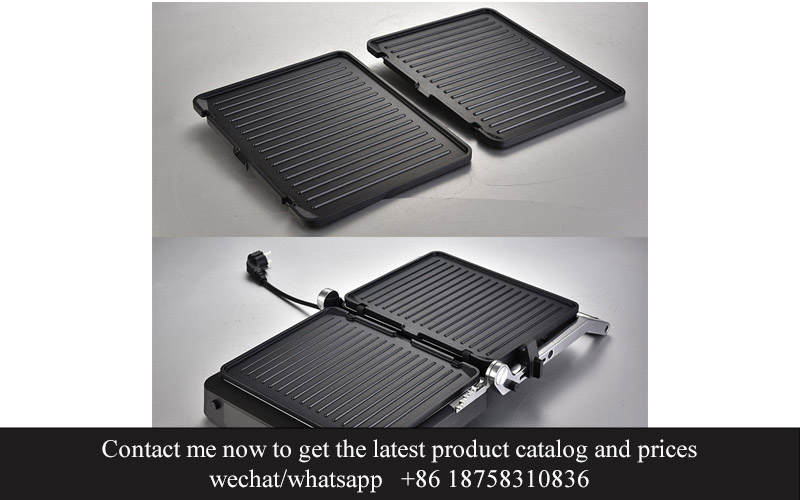
As the kitchen appliance market continues to evolve, private label offerings are gaining traction among consumers seeking quality products at competitive prices. The packaging of these private label kitchen appliances plays a pivotal role in shaping consumer perception and brand image, driving cost-effective strategies, and adapting to market trends. In this discussion, we delve into the significance of packaging in the success of private label kitchen appliances, exploring the innovative designs, sustainability initiatives, consumer psychology, cost-saving strategies, and the future landscape of this dynamic sector.
In the ever-evolving landscape of the kitchen appliance industry, a new trend has been quietly reshaping the market: the rise of private label kitchen appliances. These products, once overshadowed by brand-name counterparts, have now emerged as a significant force, challenging traditional market dynamics and offering consumers a unique value proposition.
With the increasing demand for affordable yet high-quality kitchen appliances, private label brands have found their niche. Offering competitive pricing without compromising on quality, these brands have become a go-to option for budget-conscious consumers. The success of private label kitchen appliances can be attributed to several factors that have propelled their growth in the market.
Firstly, the economic downturn in recent years has prompted many consumers to seek more affordable alternatives without sacrificing performance. Private label brands have capitalized on this trend by providing cost-effective solutions that meet the basic needs of the consumer. This has allowed them to capture a significant share of the market, especially among price-sensitive shoppers.
Secondly, the rise of e-commerce has played a crucial role in the proliferation of private label kitchen appliances. Online retailers have made it easier for consumers to compare prices and find the best deals, including those offered by private label brands. This accessibility has helped to broaden the consumer base and establish private label appliances as a credible option.
Another key factor is the increased focus on brand differentiation. While many consumers are willing to pay a premium for brand-name appliances, there is a growing segment that values innovation, design, and unique features over brand recognition. Private label brands have been able to cater to this demand by introducing innovative products that stand out in terms of design and functionality.
The packaging of private label kitchen appliances has also played a pivotal role in their success. Brands have recognized that packaging is not just a protective barrier but a tool for brand storytelling and consumer engagement. Innovative packaging designs have become a hallmark of private label brands, offering a visual appeal that resonates with today’s consumers.
Sustainability has become a key concern for many consumers, and private label brands have responded by incorporating eco-friendly materials and practices into their packaging. This not only aligns with consumer values but also helps to differentiate private label products from their competitors. From biodegradable materials to minimalistic designs, the focus on sustainability has become a selling point for private label kitchen appliances.
Moreover, the packaging of private label appliances often includes informative content that educates consumers about the product’s features and benefits. This educational approach not only enhances the consumer’s understanding but also fosters a sense of trust and credibility in the brand.
The competitive landscape has also influenced the growth of private label kitchen appliances. Major retailers have recognized the potential of private label brands to boost their sales and market share. By offering their own branded appliances alongside established names, retailers have created a win-win situation for both the consumer and the store.
Furthermore, the rise of private label kitchen appliances has sparked a wave of innovation within the industry. Manufacturers are pushing the boundaries of design and functionality, often at a lower cost, which has led to a wider range of products that cater to diverse consumer needs. This innovation has not only benefited the consumer but has also driven competition among private label brands, leading to even better products.
Lastly, the data speaks for itself. Market research shows a steady increase in the sales of private label kitchen appliances. Consumers are increasingly embracing these products, driven by their affordability, quality, and the unique value proposition they offer.
In conclusion, the rise of private label kitchen appliances is a testament to the adaptability and resilience of the market. By focusing on affordability, innovation, and consumer needs, these brands have managed to carve out a significant presence in the market. As the industry continues to evolve, it’s clear that private label kitchen appliances are not just a temporary trend but a game-changer that is here to stay.

Private label kitchen appliance packaging is a critical component of the industry, often overlooked but profoundly influential. It’s not just about protecting the product—it’s a canvas where brands can tell their story, engage consumers, and differentiate themselves in a crowded market.
The term “private label” refers to products that are manufactured by one company but sold under another company’s brand name. In the kitchen appliance sector, this trend has been gaining momentum, offering retailers a unique opportunity to expand their product offerings and capture market share. Packaging for these private label appliances plays a pivotal role in this strategy.
To start, the packaging serves as the first point of contact between the consumer and the product. It’s the silent salesman, conveying the brand’s values and promises without a single word. A sleek, modern design can evoke a sense of quality and innovation, while a more rustic, eco-friendly look might appeal to consumers seeking sustainability.
Moreover, packaging design can communicate the appliance’s features and benefits. Clear, concise visuals and informative labels can guide the customer through the decision-making process, highlighting unique selling points that set the product apart from competitors. For instance, a smart oven might feature a digital display and a sleek, touch-sensitive interface, and the packaging should reflect these high-tech features to attract tech-savvy consumers.
Functionality is another key aspect of private label kitchen appliance packaging. It must be durable enough to protect the product during transit and storage, yet also convenient for the consumer to open and use. This often means considering the packaging’s structural integrity, material choice, and ease of recycling or disposal. A well-thought-out design can reduce waste, which is a significant factor for environmentally conscious consumers.
The use of materials is a delicate balance. On one hand, brands want to use cost-effective materials that don’t compromise the product’s safety or performance. On the other, they need to appeal to consumers who are increasingly concerned about the environmental impact of their purchases. Biodegradable or recycled materials are becoming more popular, as they align with these eco-friendly values.
Color and branding are also crucial elements. The color palette should be consistent with the retailer’s brand identity and appeal to the target demographic. For example, a high-end retailer might opt for a sophisticated color scheme, while a budget-conscious consumer might prefer something more vibrant and eye-catching. The branding on the packaging should be clear and memorable, reinforcing the retailer’s logo and message.
In addition to visual elements, packaging also needs to communicate the product’s warranty and usage instructions. This is particularly important for kitchen appliances, which can be complex and require careful handling. Clear, easy-to-understand instructions can help build consumer confidence and reduce the likelihood of returns.
Another critical aspect is the cultural relevance of the packaging. Different regions have varying preferences and expectations, so it’s essential for private label brands to tailor their packaging to resonate with local consumers. This might involve incorporating local symbols, languages, or design aesthetics to create a connection with the target market.
The role of packaging in building brand loyalty cannot be overstated. When consumers have a positive experience with a product, they are more likely to repurchase and recommend it to others. High-quality, well-designed packaging can leave a lasting impression and encourage repeat business.
Furthermore, packaging can be a tool for storytelling. It can tell the brand’s origin story, highlight its commitment to quality, or share its vision for the future. This narrative aspect can create an emotional connection with the consumer, making the product more than just a functional item—it becomes an extension of the consumer’s lifestyle.
Lastly, the packaging should be adaptable to different retail channels. Whether it’s online, in-store, or a combination of both, the packaging must be able to transition seamlessly from one environment to another without losing its impact or functionality.
In conclusion, private label kitchen appliance packaging is much more than just a container for the product—it’s a strategic tool that can influence consumer perception, drive sales, and differentiate a brand in a competitive market. By focusing on design, functionality, sustainability, and cultural relevance, private label brands can create packaging that not only protects the product but also builds a lasting relationship with the consumer.
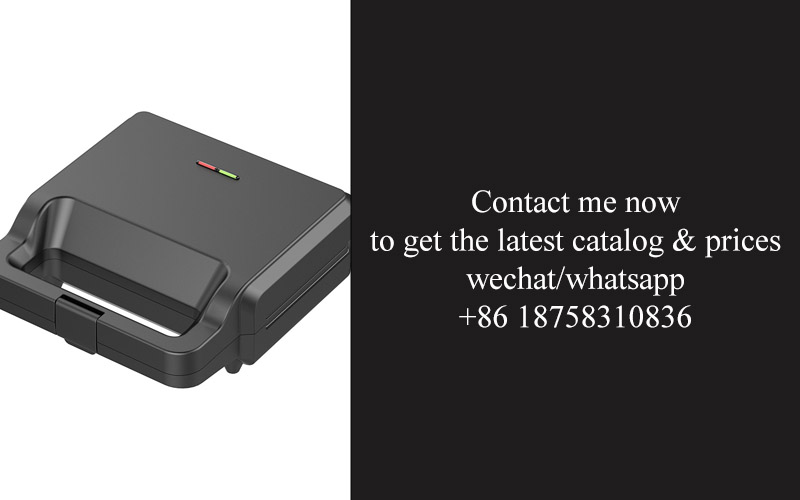
In the competitive landscape of the kitchen appliance market, private label brands are increasingly turning to innovative packaging designs to set themselves apart. These creative approaches not only enhance the visual appeal but also offer practical benefits that resonate with consumers. Let’s delve into some of the cutting-edge designs that are reshaping the private label kitchen appliance packaging landscape.
Packaging that tells a story is a powerful tool for private label brands. By incorporating storytelling elements into their designs, brands can create an emotional connection with the consumer. Imagery that reflects the appliance’s intended use, such as cooking a family meal or hosting a dinner party, can evoke nostalgia or a sense of aspiration. This narrative-driven packaging can be particularly effective in attracting customers who are looking for more than just a functional product.
Sustainability has become a cornerstone of consumer choices, and private label brands are capitalizing on this trend with eco-friendly packaging. Materials like recycled paper, biodegradable plastics, and compostable films are not only better for the environment but also appeal to environmentally conscious consumers. These innovative materials can be used to create packaging that is visually appealing while still being responsible and ethical.
Interactive packaging is another area where private label brands are making waves. By incorporating elements that allow consumers to engage with the product before they even open it, brands can provide a unique and memorable experience. Think of augmented reality (AR) labels that, when scanned, come to life with product demonstrations or recipes. This kind of packaging can serve as an effective marketing tool, offering instant value to the consumer and setting the brand apart from competitors.
Functionality is key in the kitchen appliance market, and packaging design plays a significant role in ensuring the product’s longevity. Private label brands are focusing on packaging that not only protects the appliance during shipping and storage but also makes the product easier to use and maintain. Features like easy-to-open seals, clear instructions, and space-saving designs can enhance the consumer experience and foster brand loyalty.
The integration of smart technology into packaging is a growing trend, especially in the kitchen appliance sector. Private label brands are exploring ways to use packaging as a platform for delivering additional information or services. For example, QR codes on packaging can direct consumers to instructional videos, maintenance tips, or even a customer loyalty program. This not only adds value but also helps in building a digital relationship with the consumer.
Customization is another innovative aspect of packaging that private label brands are embracing. By offering packaging that can be personalized or customized in some way—whether it’s through the use of a consumer’s name, local imagery, or unique design elements—brands can create a more personal connection. This can be particularly effective in niche markets or when targeting specific consumer demographics.
In a market saturated with choices, the visual appeal of packaging can make or break a product. Private label brands are investing in high-quality graphics and design elements that reflect the product’s quality and the brand’s identity. From sleek, minimalist designs to bold, vibrant visuals, packaging that stands out on the shelf can attract impulse buys and create a lasting impression.
Lastly, the use of materials and finishes that enhance the sensory experience is gaining traction. Touch-friendly surfaces, tactile textures, and even scented packaging can provide a unique tactile and olfactory encounter that goes beyond the visual. This multisensory approach can make the product more memorable and engaging, particularly for consumers who are looking for an emotional connection with their kitchen appliances.
As the landscape of the kitchen appliance market continues to evolve, private label brands are leading the charge with innovative packaging designs. By focusing on storytelling, sustainability, interactivity, functionality, technology, customization, visual appeal, and sensory experiences, these brands are not just packaging their products; they are crafting an experience that resonates with consumers and differentiates their products in a crowded market.
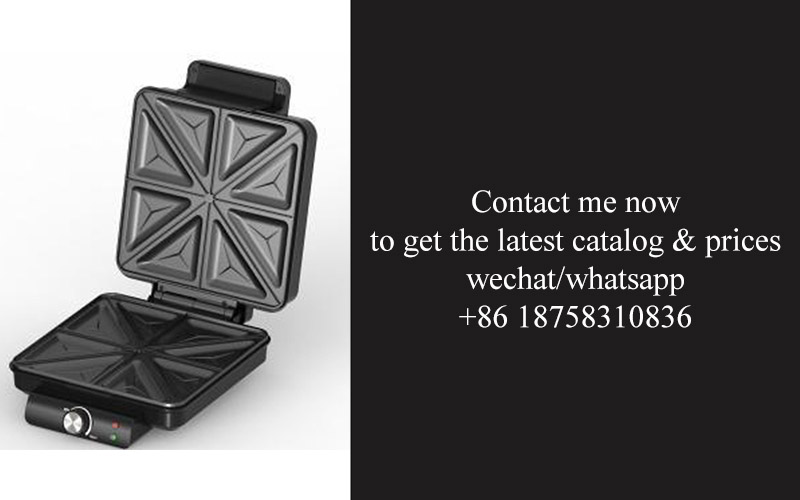
In today’s fast-paced world, where environmental concerns are at the forefront, the demand for sustainable and eco-friendly solutions has surged across various industries. The kitchen appliance sector, once predominantly focused on innovation and functionality, is now increasingly turning its attention to green packaging. This shift not only aligns with consumer expectations but also presents a unique opportunity for private label brands to stand out in a crowded market. Here’s a deeper dive into the concept of green packaging and its significance in the realm of kitchen appliances.
The first aspect of green packaging that deserves attention is its materials. Brands are exploring alternative options that reduce environmental impact. Cardboard, glass, and metal, while recyclable, are being complemented by more sustainable choices. Biodegradable plastics, made from plant-based sources like cornstarch and sugarcane, are gaining popularity. These materials break down naturally, significantly reducing the carbon footprint compared to traditional plastics.
Moreover, the use of recycled materials is becoming more prevalent. Recycled paper and plastic are being utilized not only for the packaging itself but also for promotional materials, showcasing the brand’s commitment to sustainability. This dual approach—reducing reliance on new resources and reusing existing ones—ensures that the packaging not only performs its function effectively but also contributes to a healthier planet.
Design plays a pivotal role in green packaging. Manufacturers are focusing on minimalist and efficient designs that reduce waste. By streamlining packaging, brands can minimize the amount of material used without compromising the integrity of the product. Additionally, innovative folding and compression techniques allow for more compact and space-saving packaging, further cutting down on environmental impact.
The packaging of kitchen appliances is also becoming more adaptable. Modular packaging systems, for example, enable a single design to accommodate multiple product variations, reducing the need for excess packaging. This adaptability not only enhances efficiency but also allows for more creative and eco-conscious designs that can resonate with environmentally conscious consumers.
Another significant aspect of green packaging is the consideration of the end-of-life phase. Brands are exploring packaging that is not only recyclable but also biodegradable, ensuring that it can be returned to the earth without causing harm. This includes using inks and adhesives that are free from harmful chemicals, making the packaging safer for both the environment and human health.
The rise of eco-conscious consumers is pushing the industry to be more transparent about its practices. Brands are now required to clearly communicate their commitment to sustainability, including the materials used in their packaging. This transparency builds trust and fosters a loyal customer base that values environmental responsibility.
Furthermore, green packaging is not just about materials and design; it’s also about reducing energy consumption. By choosing packaging that requires less energy to produce and transport, brands can significantly decrease their carbon emissions. The energy efficiency of packaging materials is now a critical factor in the decision-making process for manufacturers.
The impact of green packaging extends beyond the product itself. It can also drive changes in supply chain management. As brands prioritize eco-friendly packaging, they are encouraging their suppliers to adopt sustainable practices as well. This ripple effect can lead to broader industry changes and a more sustainable future.
In the realm of kitchen appliances, green packaging is not just a trend; it’s a necessity. As consumers become more environmentally aware, they are looking for brands that align with their values. Private label brands that embrace green packaging are not only catering to this demand but also positioning themselves as leaders in sustainability.
Lastly, it’s important to note that while green packaging may initially seem more expensive, the long-term benefits often outweigh the costs. By reducing waste and energy consumption, brands can lower their operational expenses and potentially offer competitive pricing to consumers. The cost-effectiveness of green packaging is a compelling argument for its adoption, especially in a market where consumers are increasingly willing to pay a premium for sustainable products.
In conclusion, the focus on green packaging in the kitchen appliance industry is a testament to the power of innovation and the importance of sustainability. As private label brands continue to explore and implement eco-friendly solutions, they are not only addressing a critical consumer concern but also paving the way for a more sustainable future.
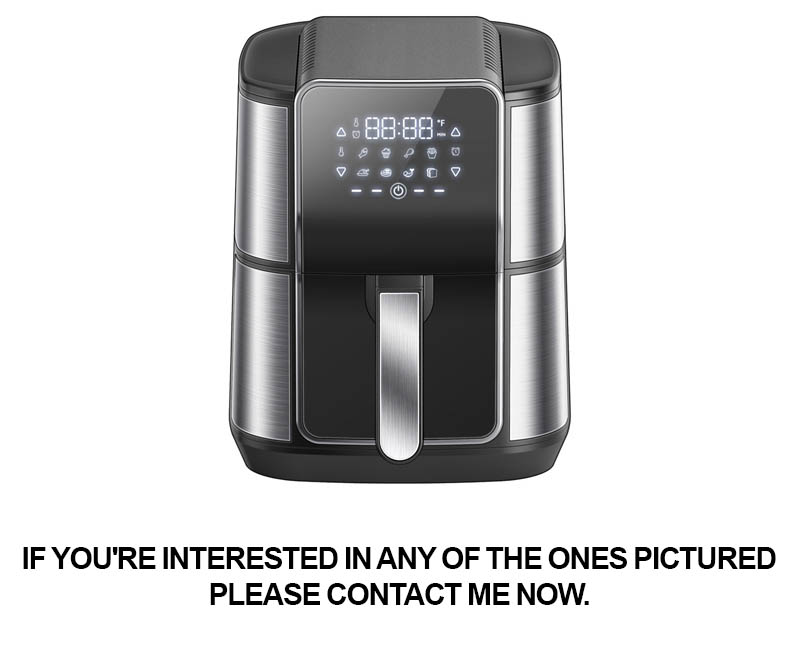
In the competitive landscape of private label kitchen appliances, packaging plays a pivotal role in shaping consumer perception and brand image. It’s not just about protecting the product; it’s about conveying a story, a promise, and a value proposition. Here’s how packaging becomes a silent advocate for private label brands:
Packaging as a Visual StorytellerThe design of packaging for private label kitchen appliances is more than just a container; it’s a canvas for storytelling. A well-crafted package can evoke emotions, remind consumers of their needs, and create a connection. For instance, a sleek, modern design might appeal to a tech-savvy consumer, while a rustic, organic look could resonate with those who value sustainability and simplicity.
Brand Identity and RecognitionConsistency in packaging design is crucial for building brand identity. Private label brands often struggle to stand out against established competitors, but a distinctive packaging design can help create a memorable brand image. By using colors, fonts, and graphics that are unique and cohesive across all products, private label brands can foster brand recognition, making it easier for consumers to identify and remember their products.
Functionality Meets AestheticsConsumers appreciate packaging that is not only visually appealing but also functional. For kitchen appliances, packaging needs to be durable enough to protect the product during shipping and storage, yet also easy to open and use. Features like tear-off tabs, clear windows to inspect the product, and eco-friendly materials that are easy to recycle can enhance the consumer experience and reinforce a brand’s commitment to sustainability.
The Power of MinimalismMinimalist packaging design has gained popularity for its clean, uncluttered look. This approach can be particularly effective for private label brands looking to convey a sense of luxury or a premium product without the hefty price tag. By focusing on the essential elements—such as the product name, key features, and brand logo—a minimalist package can create a sense of exclusivity and sophistication.
Emotional Appeal and TrustPackaging can evoke emotions and build trust with consumers. For example, a package that features a family portrait or a kitchen setting might appeal to those who value family and home-cooked meals. By using imagery and language that resonates with the target audience’s values and aspirations, private label brands can create a stronger emotional bond, which is often more compelling than functional benefits alone.
The Impact of Sustainability ClaimsConsumers are increasingly concerned about the environmental impact of their purchases. Packaging that is made from recycled materials, is recyclable, or is biodegradable can significantly influence a consumer’s perception of a brand. When a private label brand communicates its commitment to sustainability through its packaging, it can attract eco-conscious consumers and differentiate itself from competitors who may not prioritize environmental responsibility.
Interactive and Digital PackagingIn the digital age, packaging can go beyond its physical form. Interactive elements like QR codes that link to product demonstrations, recipes, or customer reviews can provide additional value and enhance the consumer experience. Digital packaging can also be more easily updated, allowing brands to keep their messaging fresh and relevant.
The Role of Color PsychologyColor is a powerful tool in packaging design. Different colors can evoke different emotions and convey different messages. For instance, green is often associated with health and nature, blue with calm and trust, and red with passion and energy. By understanding color psychology, private label brands can use packaging to convey the right message and align with the brand’s values and target market.
Packaging as a Marketing ToolFinally, packaging is a marketing tool that can communicate a brand’s message and values to consumers at the point of sale. A well-designed package can attract attention on the shelf, encourage impulse buys, and provide a lasting impression. It’s an opportunity for private label brands to differentiate themselves, communicate their unique selling proposition, and ultimately drive sales.

In the competitive landscape of private label kitchen appliances, finding cost-effective strategies is crucial for manufacturers to remain profitable. Packaging plays a pivotal role in this equation, often serving as a silent hero in reducing both production and distribution costs. Here’s how:
Packaging materials have evolved significantly over the years, offering manufacturers a plethora of options that can cut costs without compromising on quality or safety. For instance, the shift from traditional cardboard boxes to lightweight, durable materials like recyclable plastic or biodegradable paper has not only reduced the weight of the packaging but also the cost of shipping.
Streamlining packaging design can also lead to substantial savings. By eliminating unnecessary features and focusing on the essentials, companies can reduce the amount of material used, which in turn lowers the cost of materials and labor. Simplified designs can also speed up the packaging process, reducing labor costs and increasing efficiency.
Another cost-saving measure is the adoption of automated packaging systems. These machines can handle large volumes of products at a much faster rate than manual processes, reducing the need for additional labor and minimizing the risk of human error. The efficiency of automated packaging can significantly lower production costs, especially for high-volume items.
In the distribution phase, packaging can make a significant impact on costs. By using protective packaging that minimizes damage during transit, companies can reduce the frequency of returns and the associated costs of restocking and replacing products. This not only saves money but also improves customer satisfaction by ensuring that the product arrives in perfect condition.
Optimizing packaging for space can also lead to savings. Efficient packaging design can reduce the cubic volume of the product, allowing for more units to be shipped per container. This reduces the number of transport vehicles needed and the associated fuel and maintenance costs.
The use of sustainable materials is not only environmentally friendly but also cost-effective. By investing in eco-friendly packaging, companies can benefit from reduced waste disposal costs and potentially lower costs for materials over time as the demand for sustainable options grows. Additionally, there’s a growing market for companies that prioritize sustainability, which can enhance brand reputation and potentially lead to increased sales.
Packaging plays a crucial role in brand perception, and this can have a direct impact on costs. A well-designed package that communicates quality and reliability can help private label brands command higher prices, justifying the investment in better materials and design. Conversely, a lackluster package might lead to price concessions, affecting profitability.
Innovation in packaging design can also open up new revenue streams. For example, packaging that doubles as a promotional tool, such as a container that can be repurposed as a storage bin or a gift, can create added value for the consumer and encourage repeat purchases.
Lastly, the strategic use of packaging can help in managing inventory. With the right packaging, products can be stored more efficiently, reducing the need for extensive warehousing space. This not only cuts down on storage costs but also minimizes the risk of product spoilage or damage.
In conclusion, while packaging may seem like a minor detail in the grand scheme of private label kitchen appliances, its impact on cost-effectiveness is profound. By focusing on innovative materials, streamlined designs, automation, protective measures, space optimization, sustainability, brand perception, and inventory management, manufacturers can reduce costs without compromising on quality or customer satisfaction. The smart use of packaging is a strategic tool that can help private label brands thrive in a competitive market.
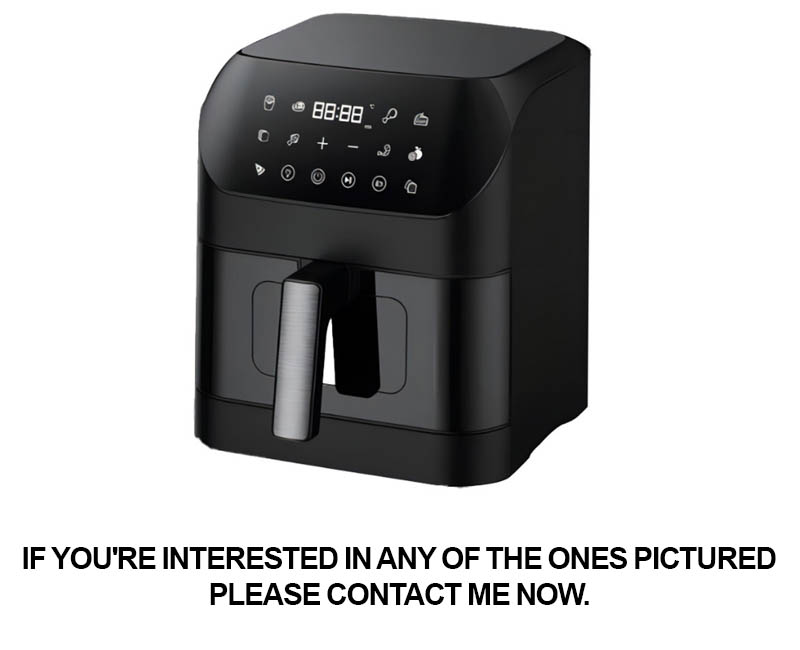
In today’s fast-paced consumer market, understanding the latest packaging innovations is crucial for brands looking to stay ahead. These innovations not only cater to changing consumer preferences but also reflect the broader market trends that are shaping the industry. Let’s delve into some key insights into the newest developments in packaging technology.
The shift towards sustainability is a driving force behind many of the latest packaging innovations. Brands are increasingly seeking eco-friendly solutions that reduce their environmental footprint. One such innovation is the use of biodegradable materials, which are not only better for the planet but also resonate with environmentally conscious consumers.
Smart packaging technology is another area experiencing significant advancements. This technology goes beyond the traditional barrier of protecting products during transport and storage. It includes features like RFID tags, QR codes, and even integrated sensors that provide real-time information about the product’s condition. For private label brands, this can mean a more transparent supply chain and a chance to build trust with customers.
Personalization has become a key driver in packaging design, as consumers expect products to cater to their specific needs and preferences. Customizable packaging allows brands to create a unique identity and connect more deeply with their target audience. By incorporating personalization elements such as custom graphics or personalized messages, private label brands can stand out on the shelves and create a more memorable brand experience.
The rise of e-commerce has also influenced packaging design. With more products being purchased online, there’s a growing emphasis on packaging that is not only protective but also convenient for shipping and returns. This includes the use of lightweight, compact packaging that minimizes shipping costs and reduces the risk of damage during transit. Additionally, packaging that can be easily reused or repurposed is becoming more popular, as it aligns with the consumer desire for sustainable living.
Packaging that communicates health and safety is another trend gaining traction. As consumers become more health-aware, packaging that highlights organic ingredients, non-toxic materials, and hygienic seals can be a significant differentiator for private label brands. Clear labeling and transparent packaging can build consumer trust and encourage purchases.
Innovation in packaging also extends to the use of recycled materials. Brands are looking for ways to reduce waste and minimize the impact on natural resources. By using recycled plastics, paper, and other sustainable materials, private label brands can appeal to a broader audience that values sustainability.
Another interesting development is the integration of augmented reality (AR) into packaging. By scanning a product’s packaging with a smartphone, consumers can access additional information, such as recipe ideas, product reviews, or even virtual unboxing experiences. This interactive element not only enhances the customer experience but also provides brands with a new channel for engagement and education.
The demand for convenience is also influencing packaging design. As consumers lead busier lives, they seek products that are easy to use and store. Single-serve packaging, portion control, and resealable containers are all examples of packaging that cater to this desire for convenience. By offering these features, private label brands can appeal to a wide range of consumers, from busy professionals to health-conscious families.
Lastly, the role of packaging in brand image cannot be overstated. The visual appeal of packaging can significantly impact consumer perception. A well-designed package that aligns with the brand’s values and communicates its unique selling points can create a strong first impression and foster brand loyalty.
In conclusion, the latest packaging innovations are a testament to the dynamic nature of the market and the evolving needs of consumers. By embracing these trends, private label brands can not only reduce costs and improve efficiency but also enhance their brand image and resonate more effectively with their target audience. Whether it’s through sustainability, personalization, or technological integration, the future of packaging holds endless possibilities for those willing to innovate.
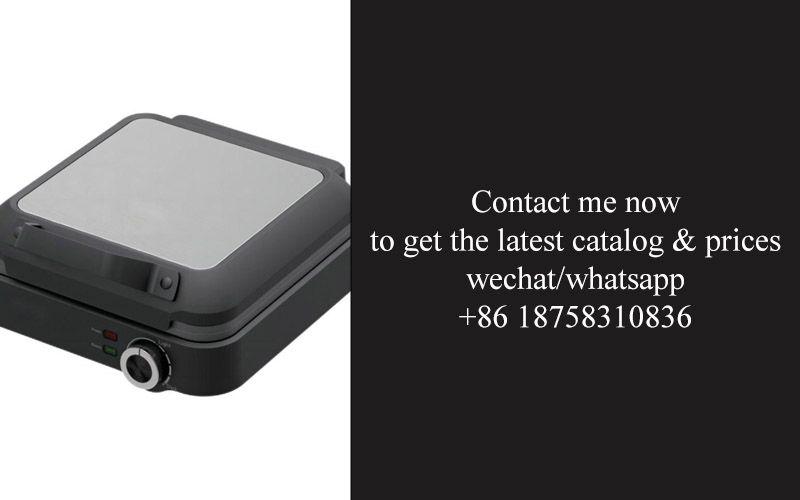
In today’s competitive kitchen appliance market, private label brands are carving out their niche by focusing on innovative packaging solutions. Let’s delve into some notable examples of successful private label kitchen appliance packaging that have made a mark in the industry.
One such case is the “EcoSmart” line of appliances by a well-known retailer. Their sleek, minimalist packaging design not only showcases the product’s modern aesthetic but also emphasizes the brand’s commitment to sustainability. The use of recycled materials and minimalistic printing reduces the carbon footprint while still effectively communicating the brand’s identity.
The “Chef’s Collection” from another private label brand stands out for its clever packaging that doubles as a display unit. Each appliance comes in a box that can be repurposed as a countertop stand, saving space and reducing waste. This approach not only enhances the customer experience but also highlights the brand’s innovative thinking.
Another striking example is the “SmartHome” brand, which has embraced smart technology in their packaging. Their kitchen appliances are not only smart but also come with an interactive display on the packaging itself. This feature allows customers to see the appliance’s features and functionality without even opening the box, making the shopping experience more engaging and informative.
For the “GreenGarden” collection, packaging is not just a means to protect the product; it’s a part of the brand’s narrative. Each appliance comes in a box adorned with vibrant imagery of greenery, reflecting the brand’s focus on eco-friendly living. The packaging is also designed to be fully recyclable, reinforcing the brand’s sustainability message.
The “UrbanChef” brand has taken a unique approach with their kitchen appliances by incorporating the product itself into the packaging design. For instance, a countertop blender comes with a package that doubles as a chic kitchen island. This clever design not only serves a functional purpose but also creates a memorable unboxing experience that customers love to share on social media.
In the case of “HealthChef,” the packaging is a blend of functionality and health-conscious messaging. Each appliance, like a high-speed blender or an air fryer, comes in a box that includes tips for healthy cooking and eating. The packaging design is both informative and appealing, making the brand stand out as a thought leader in the health and wellness category.
For the “SimplifyLife” brand, simplicity is key in their packaging design. Their kitchen appliances are designed to be user-friendly, and their packaging reflects this philosophy. The boxes are easy to open, and the design is uncluttered, allowing customers to focus on the product’s benefits without distraction.
“GlobalChef” takes a different route with their international-inspired appliance collections. Their packaging features cultural motifs and language translations, catering to a diverse customer base and showcasing the brand’s global perspective. This approach not only attracts customers from various cultural backgrounds but also educates them about different culinary traditions.
In the “EcoElegance” line, the packaging is as elegant as the appliances themselves. High-quality materials like recycled wood and sustainable fabrics are used to create a luxurious yet eco-conscious unboxing experience. This combination of sophistication and sustainability resonates with customers who are looking for premium products without the premium price tag.
Each of these case studies demonstrates how private label brands can differentiate themselves through innovative packaging. By focusing on design, sustainability, functionality, and brand storytelling, these companies have not only reduced costs but also enhanced the consumer experience and brand image, leading to increased sales and customer loyalty.
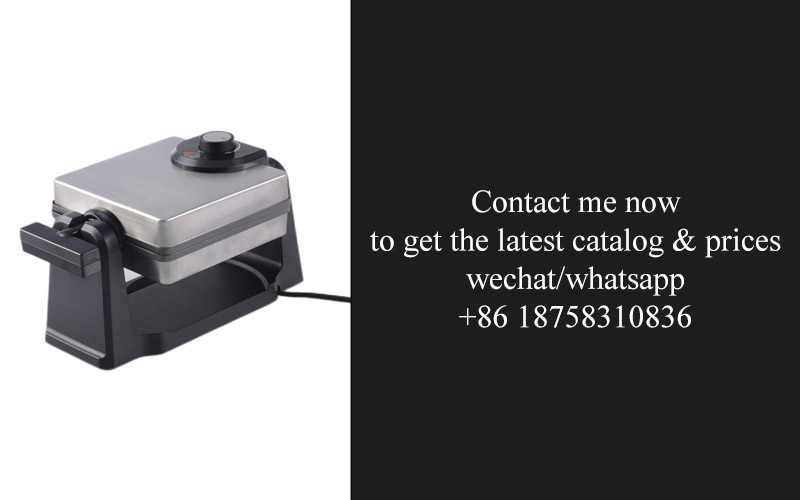
In the ever-evolving landscape of kitchen appliance packaging, private label brands are pushing boundaries with innovative solutions. As technology advances and consumer demands shift, the future of private label kitchen appliance packaging is poised to be transformative. Here’s a glimpse into the emerging technologies and trends that are shaping this sector.
The integration of smart materials is revolutionizing the way private label kitchen appliances are packaged. These materials can adapt to changes in temperature, pressure, or humidity, providing added protection and reducing the risk of damage during transit. For instance, temperature-sensitive packaging ensures that delicate appliances remain safe from extreme temperatures, which is particularly crucial for products like refrigerators and freezers.
Customization is another trend gaining traction in private label packaging. By leveraging digital printing technologies, brands can create unique and eye-catching designs that resonate with specific consumer demographics. This level of personalization not only enhances brand recognition but also adds a sense of exclusivity to the product, making it more appealing on store shelves.
Sustainability remains a cornerstone in the packaging industry, and private label brands are leading the charge. Biodegradable and compostable materials are becoming more accessible, offering a greener alternative to traditional plastics. Companies like TerraCycle are pioneering recycling initiatives that transform packaging waste into new products, further solidifying the commitment to environmental responsibility.
Augmented reality (AR) is also making waves in the packaging sector. By incorporating AR into packaging designs, private label brands can offer customers an immersive shopping experience. Imagine scanning a kitchen appliance box with a smartphone to see how it would look in your own kitchen, complete with interactive features that showcase the appliance’s capabilities. This not only provides valuable information but also engages consumers in a more dynamic way.
The rise of modular packaging systems is streamlining the production and distribution process. These systems allow for the creation of custom packaging solutions that can be easily adapted to different product sizes and shapes. This flexibility not only reduces the need for excess materials but also minimizes waste, as packaging can be designed to fit precisely around the product.
Blockchain technology is beginning to play a role in packaging transparency. By using blockchain, private label brands can track the origin of their materials, ensuring that they are sourced from sustainable and ethical suppliers. This level of traceability not only builds trust with consumers but also allows brands to demonstrate their commitment to responsible sourcing.
In the realm of packaging design, there’s a growing emphasis on minimalism. Sleek, clean lines and a lack of unnecessary embellishments are becoming more popular, reflecting a shift towards simplicity and functionality. This minimalist approach not only looks modern but also reduces the amount of material used, contributing to a more sustainable packaging solution.
The use of sustainable adhesives and sealants is also on the rise. These eco-friendly alternatives to traditional glue and sealants are not only better for the environment but can also improve the longevity of the packaging. They offer a strong bond without the use of harmful chemicals, making them a preferred choice for brands looking to enhance their green credentials.
The future of private label kitchen appliance packaging is also about embracing the digital age. QR codes and NFC (Near Field Communication) technology are being used to provide consumers with instant access to product information, tutorials, and customer support. This not only adds value to the product but also enhances the customer experience by bridging the gap between the physical product and the digital world.
In conclusion, the future of private label kitchen appliance packaging is bright, driven by technological advancements, sustainability initiatives, and a consumer-centric approach. As these trends continue to evolve, private label brands will be well-positioned to offer innovative and eco-conscious solutions that meet the demands of today’s discerning consumers.
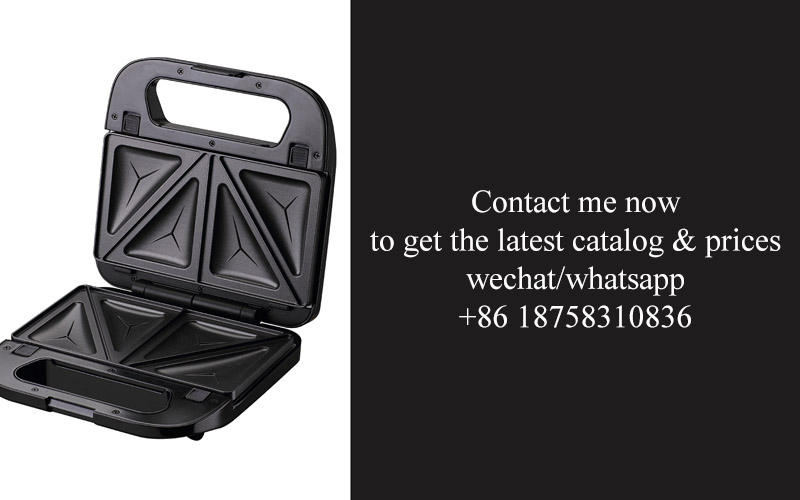
In the ever-evolving landscape of the kitchen appliance industry, private label packaging has emerged as a pivotal factor in driving growth and innovation. This conclusion delves into the reasons why private label kitchen appliance packaging is not just a trend but a cornerstone of industry expansion.
Private label packaging offers a unique opportunity for manufacturers to differentiate themselves in a crowded market. By crafting packaging that resonates with consumers’ values and preferences, brands can create a lasting impression. This personalized approach to packaging can lead to increased customer loyalty and repeat purchases, as consumers feel a connection to the brand and its products.
The cost-effectiveness of private label packaging cannot be overstated. By producing packaging in bulk and leveraging economies of scale, manufacturers can significantly reduce production costs. This cost savings is often passed on to the consumer, making private label appliances more accessible and attractive in a competitive market.
Innovation in packaging design has become a key driver of success for private label brands. From sustainable materials to interactive features, cutting-edge packaging solutions not only protect the product but also enhance the consumer experience. This focus on innovation has opened up new avenues for brands to stand out, appealing to environmentally conscious consumers and tech-savvy buyers alike.
The role of packaging in shaping brand image is undeniable. A well-designed package can convey a brand’s values, from sustainability to luxury. For private label brands, this is especially crucial as they often compete against established names. A strong brand image, bolstered by thoughtful packaging, can help private label brands carve out a niche and establish themselves as a trusted choice among consumers.
The rise of e-commerce has also reshaped the packaging landscape. Online shoppers often rely on packaging to make their first impression of a product. Private label brands that invest in high-quality, visually appealing packaging are more likely to capture the attention of online consumers, leading to higher conversion rates and sales.
As the industry continues to grow, the demand for efficient and sustainable packaging solutions is on the rise. Brands that prioritize eco-friendly materials and practices are not only addressing consumer concerns but also setting themselves apart from competitors. This commitment to sustainability can enhance a brand’s reputation and appeal to a broader customer base.
Innovation in packaging extends beyond aesthetics and sustainability. Advances in technology, such as smart packaging that can provide real-time product information or even track usage, are becoming increasingly popular. These technologies not only enhance the consumer experience but also offer valuable data to manufacturers for product improvement and inventory management.
The global kitchen appliance market is witnessing a shift towards customization. Consumers are looking for products that cater to their specific needs and preferences. Private label brands that offer customizable packaging solutions can cater to this demand, allowing customers to choose their preferred color, design, or even logo. This level of personalization can create a strong emotional bond between the consumer and the brand.
As we look to the future, the importance of private label kitchen appliance packaging in driving industry growth becomes even more apparent. The ability to adapt to changing market trends, consumer preferences, and technological advancements will be crucial for brands seeking to thrive in the competitive landscape.
In conclusion, private label kitchen appliance packaging is more than just a protective layer; it is a strategic tool that can shape a brand’s destiny. By focusing on cost-effectiveness, innovation, sustainability, and consumer perception, private label brands can secure a place at the forefront of industry growth. As the market continues to evolve, those who embrace the power of packaging will undoubtedly lead the way.